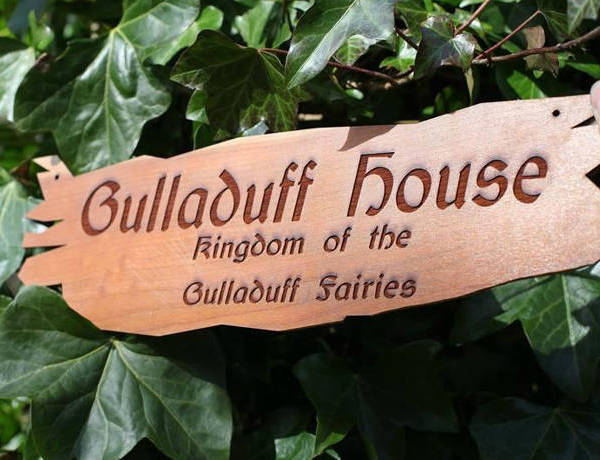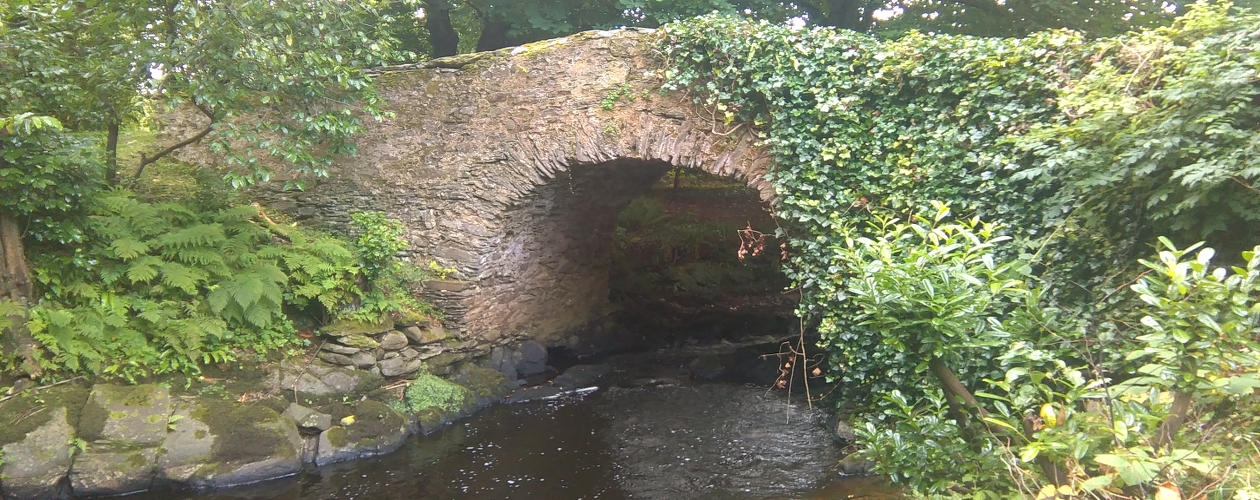Our nearby main house called “Gulladuff House” of the local Gulladuff Town lands, is the oldest continually inhabited house in the area and predates the town of Moville that was built largely since 1835. This House, built on the site of two earlier cottages, is from the 1700s.
Two rivers meet close to the hostel and in front of the house. The main river then does a spectacular U- turn in the woods. There are 4 bridges altogether and one can walk to the town over two of them. Two are archaeological sites and one bridge is reputed to be the oldest in Ireland and dated from the 6th century as built by St. Patrick. It is associated with nearby 0.5km distant early Christian monastic settlement of Cooley Cross where there is a Celtic cross (pre-Christian) and monastic ruins including a corbelled “skull hose” or oratory.
The Corn Mill, with which we share our entrance, was originally part of the overall property.
The bridge opposite ‘Gulladuff House’ is reputed to be the oldest bridge in Ireland, dating back to the 6th Century.
Legend has it that this bridge was built by St. Patrick, who at the time was visiting the local monastery of Cooley. Crossing the river with the monks, with local saint, St Finian, St. Patrick stood on what he thought to be a silver stone and fell into the river, only to discover that this was no stone but a salmon that had caused him to fall. St. Patrick ordered a bridge to be built and cursed the salmon from the River Bredagh.
To this day, no salmon is present in the river but we have good stocks of brown trout and eels. Guests are welcome to fish or paddle.
The bridge was inspected by Dr. Innes, the professor of Engineering in all its branches in Cambridge University, and is specially famed for the science of bridges. He gave a sigh of satisfaction when he stood beside our old bridge, and said, “Yes, that is the real article.” When asked whether we might date it back to the sixth century. He saw no reason to the contrary. It is clear that the bridge was erected when Cooley Church was built, in order that people living on the left bank of the river might most conveniently cross to the right bank in all weathers for their worship, and be saved the toil of descending and ascending steep braes higher up the hill. (Taken from A History of Moville and its neighbourhood by Rt. Rev. Bishop Henry Montgomery, 1847 -1932)







